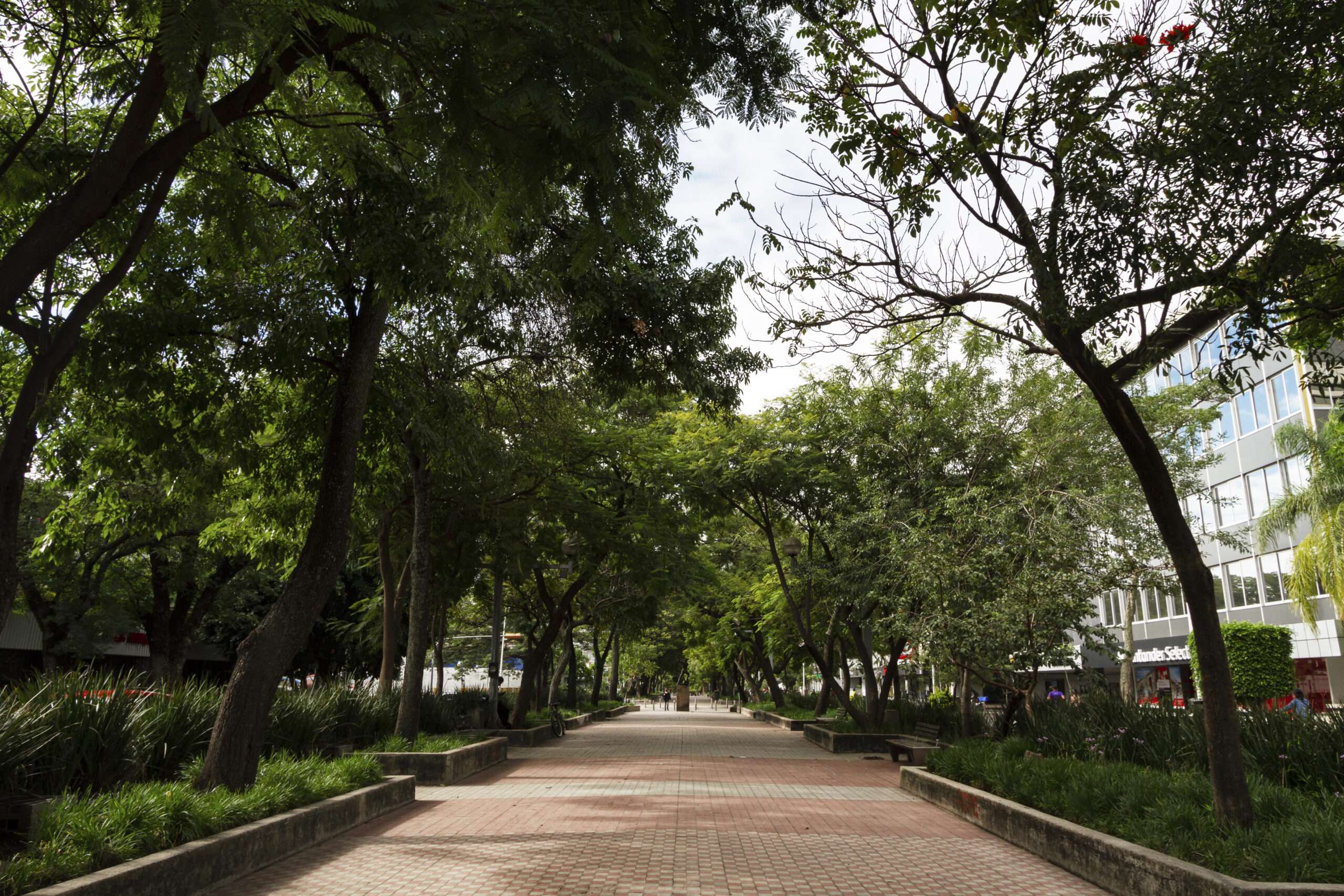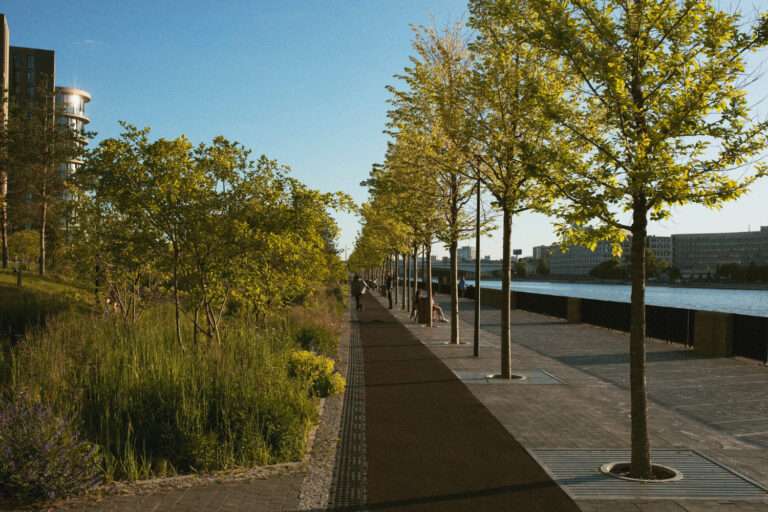Tree Pits in Urban Spaces: Why They’re Vital for Greener, Healthier Cities
Introduction
In the middle of concrete jungles, tree pits offer more than just aesthetic greenery — they’re a vital part of sustainable urban development. Carefully designed tree pits don’t just help trees thrive in harsh environments; they actively support flood prevention, biodiversity, air quality, and pavement longevity.
Whether you’re a local authority, commercial developer, or public realm contractor, understanding the value and function of tree pits in urban environments is essential. In this article, we explore how tree pits work, why they matter, and what makes a durable, low-maintenance installation that supports healthy, long-living trees.
What Are Tree Pits and Why Do They Matter?
Tree pits are excavated spaces in paved or built-up areas designed to house trees while supporting root growth and healthy drainage. Without a properly constructed pit, urban trees face root compaction, waterlogging, poor nutrient supply and reduced lifespan — not to mention the risk of lifting paving or damaging surrounding infrastructure.
A well-planned tree pit:
- Supports long-term tree health
- Reduces maintenance costs
- Protects surrounding hard landscaping
- Enhances biodiversity and visual appeal
Key Benefits of Tree Pits in Urban Areas
🌳 Improved Tree Longevity
Enables healthy root development by preventing compaction and waterlogging.
💧 Better Drainage
Promotes water infiltration and prevents standing water on paved surfaces.
🌿 Increased Biodiversity
Encourages habitats for insects and birds within built environments.
🛣️ Protects Surrounding Surfaces
Prevents pavement uplift and infrastructure damage from root growth.
Common Challenges in Urban Tree Planting
Despite their many benefits, installing tree pits isn’t always straightforward. Typical challenges include:
| Challenge | Impact | Solution |
|---|---|---|
| Soil compaction from foot or vehicle traffic | Reduces oxygen availability to roots | Use structural soil cells or load-bearing systems |
| Poor drainage | Leads to waterlogged roots and tree decline | Install sub-base drainage and root-friendly media |
| Vandalism or tree damage | Destroys young trees before they establish | Use robust guards and planters |
| Space restrictions | Limits root and canopy growth | Use specially designed root director systems |
Tree Pit Construction: What to Include for Success
The components of a successful tree pit system vary depending on location, tree type, and surrounding surfaces. However, here’s a basic overview of what should be included:
| Component | Purpose |
|---|---|
| Excavated Pit | Space for roots to expand and breathe |
| Structural Soil or Soil Cells | Provides load-bearing support while promoting root growth |
| Irrigation System | Ensures the tree receives consistent moisture |
| Root Barrier | Prevents root encroachment into utilities or pavement |
| Drainage Layer | Prevents water stagnation and improves infiltration |
| Tree Grille or Guard | Offers protection and decorative value |
| Mulch or Top Layer | Reduces evaporation and weeds while improving appearance |
For an expert overview of construction methods, visit our Tree Pit Construction page.
FAQs About Tree Pits
How big should a tree pit be?
As a rule of thumb, a minimum of 1m x 1m x 1m is needed, but larger pits are strongly recommended for long-term tree health. Deep-rooted or large canopy species may need double that size or more.
Can tree pits help with surface water management?
Absolutely. With proper drainage and soil mix, tree pits contribute to SuDS (Sustainable Drainage Systems) by slowing and filtering rainwater before it enters the main drainage system.
Do they need regular maintenance?
Yes, but with the right design — including weed control fabric, mulch layers, and irrigation — maintenance is minimal and manageable. Pruning, litter removal, and periodic inspections are all part of keeping urban trees healthy.
Can existing pavements be retrofitted with tree pits?
Yes, with careful excavation and design adjustments. Retrofitting must account for underground utilities, traffic loading, and public access.
Best Practices for Tree Pit Installation in the UK
If you’re planning tree pits for public spaces, parks, car parks or commercial developments, here are key principles to follow:
- ✅ Use British-grown trees where possible to reduce transplant shock
- ✅ Match tree species to soil type and surrounding environment
- ✅ Opt for root director systems for restricted areas
- ✅ Design for both aesthetics and function — blending into public realm design
- ✅ Consider long-term maintenance during planning
- ✅ Protect young trees with anti-vandal solutions and suitable guards
The Role of Tree Pits in Climate Resilience
Urban greening is essential in helping towns and cities cope with rising temperatures and flash flooding. Tree pits are a key enabler of this.
By capturing stormwater, absorbing CO₂, and improving air quality, tree pits directly contribute to urban resilience. In hotter summers, shaded walkways created by street trees can reduce pavement temperatures by up to 10°C, helping to cool urban areas naturally.
Conclusion: Invest in Healthier Cities with Better Tree Pits
Tree pits are not just holes in the pavement – they’re strategic assets that support urban tree health, enhance biodiversity, reduce maintenance headaches, and futureproof towns and cities. Whether you’re designing for a retail development, town centre, or business park, investing in well-constructed tree pits is a long-term gain for the environment and the community.
From sustainability goals to SuDS compliance, tree pits are a small detail with a huge impact. Don’t overlook them.
Killingley Insights is the editorial voice of NT Killingley Ltd, drawing on decades of experience in landscaping, environmental enhancements, and civil engineering projects across the UK.








